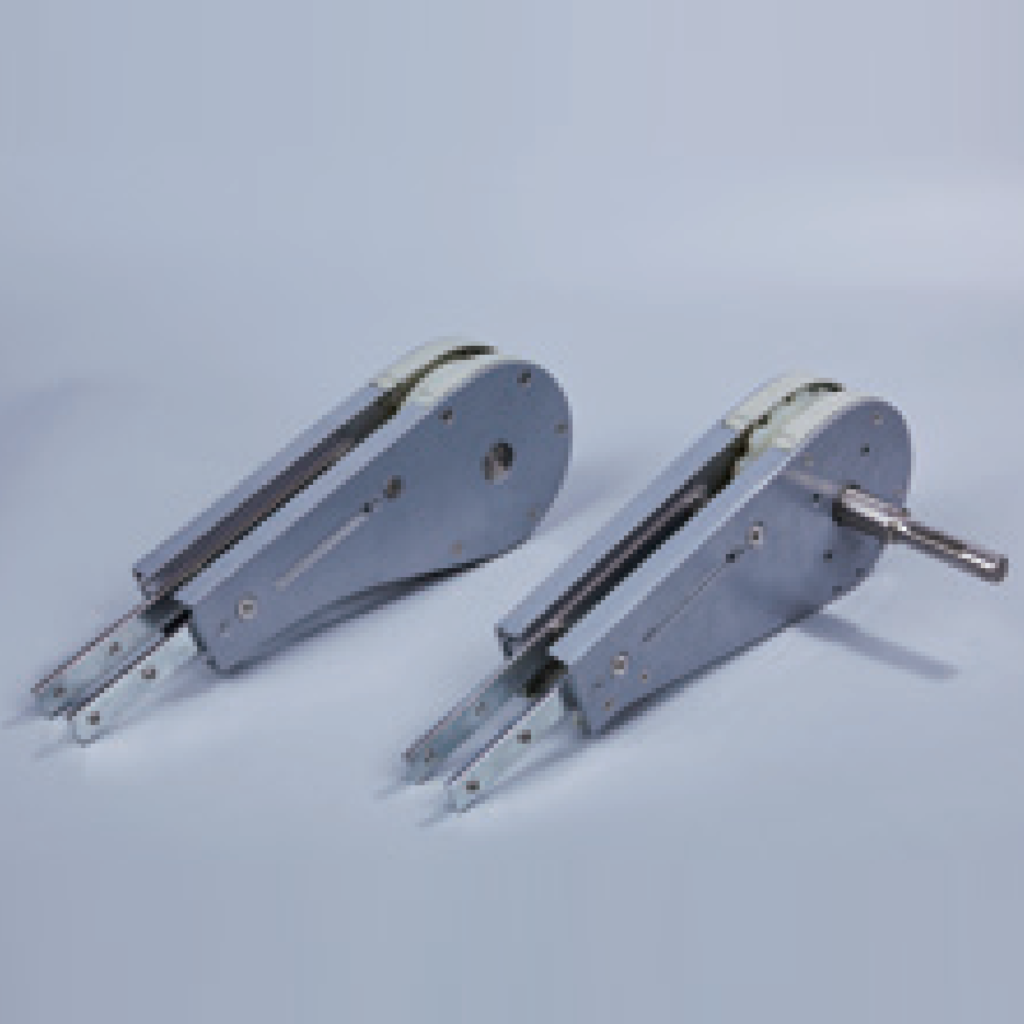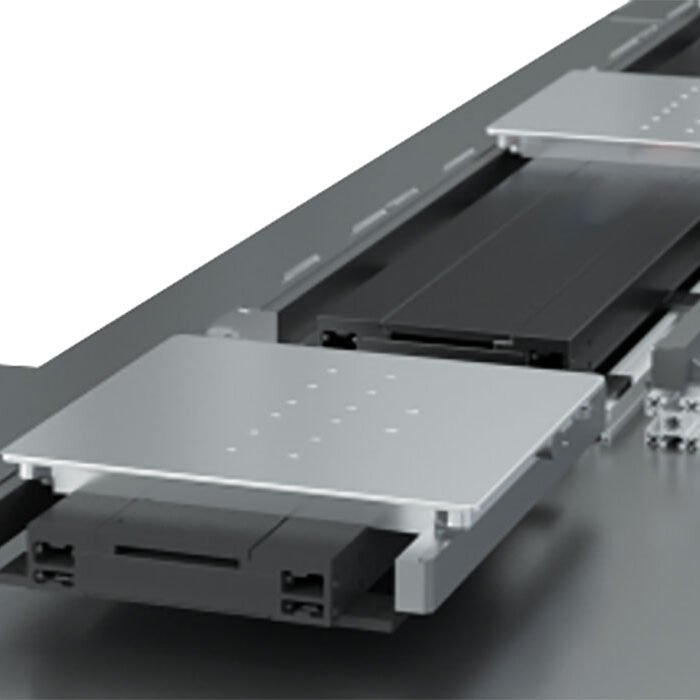Trasportatori a nastro sono componenti vitali in diversi settori industriali, in quanto consentono una movimentazione efficiente e continua dei materiali. Svolgono un ruolo essenziale nelle operazioni di produzione, distribuzione e logistica. In questa guida completa, esploreremo le varie parti di un trasportatore a nastro, le loro funzioni e il modo in cui contribuiscono all'efficienza complessiva del sistema.
Che cos'è un nastro trasportatore?

Un trasportatore a nastro è un tipo di attrezzatura meccanica di movimentazione che utilizza un nastro per trasportare i materiali da un punto all'altro. Il nastro è tipicamente realizzato in un materiale resistente, come la gomma o il tessuto, ed è sostenuto da rulli. Questi trasportatori sono ampiamente utilizzati in vari settori, tra cui quello manifatturiero, agricolo, minerario e dei trasporti.
Parti di un nastro trasportatore
Conoscere i componenti di un trasportatore a nastro è fondamentale per chiunque sia coinvolto nella progettazione, nella manutenzione o nel funzionamento dei sistemi di trasporto. Ecco le parti principali di un trasportatore a nastro:
1. Cintura

Il cintura è il componente più critico del sistema di trasporto. Serve come superficie su cui vengono trasportati i materiali. A seconda dell'applicazione, i nastri possono variare per materiale, spessore e larghezza. I materiali più comuni per i nastri sono:
- Gomma: Offre un'elevata durata e flessibilità, adatta a carichi pesanti.
- PVC: Leggero e resistente agli agenti chimici, ideale per carichi leggeri e medi.
- Tessuto: Utilizzato per applicazioni specifiche che richiedono flessibilità e basso attrito.
2. Unità di trasmissione

Il unità di azionamento alimenta il nastro trasportatore. In genere è costituito da un motore elettrico, un riduttore e un sistema di pulegge. Il motore fa girare la puleggia motrice, che muove il nastro lungo il percorso del trasportatore. I componenti chiave includono:
- Motore: Converte l'energia elettrica in energia meccanica.
- Cambio: Riduce la velocità del motore aumentando la coppia.
- Pulegge: Guida e sostiene la cinghia; la puleggia motrice è responsabile del movimento, mentre la puleggia folle sostiene il ritorno della cinghia.
3. Galoppini
Galoppini sono rulli che sostengono il nastro per tutta la sua lunghezza. Svolgono un ruolo fondamentale nel mantenere la tensione e l'allineamento del nastro. I rulli folli sono classificati in diversi tipi in base alle loro funzioni:
- Facchini di trasporto: Sostenere il carico e mantenere la cintura in posizione.
- Girelle di ritorno: Riportare il nastro vuoto all'unità di trasmissione.
- Addestramento dei rulli di rinvio: Aiutano ad allineare il nastro e a prevenire lo slittamento.
4. Unità di presa
Il unità di prelievo regola la tensione del nastro per garantire prestazioni ottimali. Compensa l'eventuale allungamento del nastro nel tempo. Esistono due tipi principali di sistemi di avvolgimento:
- Presa manuale: Richiede regolazioni manuali per mantenere la tensione della cinghia.
- Presa automatica: Utilizza sensori di tensione per regolare automaticamente la tensione della cinghia.
5. Struttura di supporto del nastro
Il struttura di supporto del nastro è costituito da telai e supporti che mantengono in posizione il sistema di trasporto. Fornisce stabilità e previene i cedimenti, garantendo un funzionamento regolare. I componenti principali includono:
- Cornici: Fornire la struttura complessiva del sistema di trasporto.
- Supporti: Assicurare la stabilità e l'allineamento della cinghia e dei tendicinghia.
6. Battiscopa
Battiscopa è una barriera protettiva che circonda i bordi del nastro per contenere i materiali e prevenire le fuoriuscite. Una zoccolatura installata correttamente può ridurre la perdita di materiale e migliorare la sicurezza.
7. Sensori e controlli
I moderni trasportatori a nastro includono spesso sensori e sistemi di controllo per monitorare le prestazioni e automatizzare i processi. I sensori più comuni includono:
- Sensori di velocità: Monitorare la velocità del nastro per assicurarsi che funzioni entro l'intervallo desiderato.
- Sensori di carico: Rileva il peso dei materiali sul nastro per evitare il sovraccarico.
- Sensori di posizione: Assicura il corretto allineamento del nastro e segnala all'operatore eventuali problemi.
Funzioni delle parti del nastro trasportatore
Ogni componente di un trasportatore a nastro svolge funzioni specifiche che contribuiscono all'efficacia complessiva del sistema. Ecco una ripartizione di queste funzioni:
1. Funzione della cintura
La funzione principale del nastro è il trasporto di materiali da un luogo all'altro. Il materiale e il design ne determinano la capacità di carico, la flessibilità e la resistenza all'usura.
2. Funzione dell'unità di azionamento
L'unità di trasmissione avvia il movimento del nastro trasportatore, fornendo la potenza necessaria per il trasporto dei materiali. La sua efficienza influisce direttamente sulla velocità e sulla capacità di carico del trasportatore.
3. Funzione oziosa
I rulli di rinvio sostengono il nastro e i materiali trasportati. Contribuiscono a mantenere la tensione del nastro, ad allinearlo e a ridurre l'attrito, garantendo un funzionamento regolare.
4. Funzione dell'unità di prelievo
L'unità di presa mantiene la tensione corretta del nastro, prevenendone lo slittamento e l'usura. Assicura un funzionamento efficiente del trasportatore e prolunga la durata del nastro.
5. Struttura di supporto della cinghia Funzione
La struttura di supporto assicura che il trasportatore rimanga stabile e allineato. Riduce al minimo i cedimenti e i disallineamenti, che possono causare problemi operativi e una maggiore usura dei componenti.
6. Funzione battiscopa
Gli zoccoli contengono i materiali sul nastro, riducendo le fuoriuscite e mantenendo un ambiente di lavoro pulito. Contribuisce inoltre a migliorare la sicurezza prevenendo i rischi di scivolamento.
7. Sensori e controlli Funzione
I sensori e i sistemi di controllo monitorano e ottimizzano le prestazioni del trasportatore. Forniscono dati in tempo reale su velocità, carico e posizione, consentendo agli operatori di affrontare i problemi in modo proattivo.
Vantaggi dell'utilizzo dei trasportatori a nastro
I trasportatori a nastro offrono diversi vantaggi nelle applicazioni di movimentazione dei materiali:
- Efficienza: Forniscono un trasporto continuo, riducendo i costi di manodopera e aumentando la produttività.
- Versatilità: Adatto a diversi materiali e applicazioni, tra cui materiali sfusi, merci imballate e carichi pesanti.
- Sicurezza: Con misure di sicurezza adeguate, i trasportatori a nastro riducono al minimo i rischi associati alla movimentazione e al trasporto manuale.
- Bassa manutenzione: I moderni trasportatori a nastro sono progettati per durare nel tempo e richiedono una manutenzione minima.
Tentativi finali
I trasportatori a nastro sono componenti essenziali in diversi settori industriali e forniscono soluzioni efficienti e affidabili per la movimentazione dei materiali. Conoscere le parti e le funzioni dei trasportatori a nastro aiuta gli operatori e gli ingegneri a progettare, mantenere e ottimizzare questi sistemi per ottenere la massima efficienza. Con l'evoluzione dei settori, le innovazioni nella tecnologia dei trasportatori continuano a migliorare le prestazioni, la sicurezza e l'affidabilità.
Domande frequenti sui trasportatori a nastro
1. Quali sono le applicazioni più comuni dei trasportatori a nastro?
I trasportatori a nastro sono comunemente utilizzati nelle industrie manifatturiere, logistiche, minerarie, agricole e alimentari per il trasporto di materiali.
2. Come scegliere il nastro giusto per il mio trasportatore?
Considerare fattori quali il tipo di materiale trasportato, la capacità di carico, le condizioni ambientali e la velocità desiderata del trasportatore.
3. Quale manutenzione è necessaria per i trasportatori a nastro?
Ispezioni regolari, pulizia, lubrificazione delle parti mobili e monitoraggio della tensione del nastro sono essenziali per mantenere le prestazioni del trasportatore.
Tabella: Parti fondamentali dei trasportatori a nastro
| Parte | Funzione |
|---|---|
| Cintura | Trasporto di materiali |
| Unità di trasmissione | Alimenta il movimento del convogliatore |
| Galoppini | Sostenere e allineare il nastro |
| Unità di presa | Mantiene la tensione della cinghia |
| Struttura di supporto del nastro | Fornisce stabilità e allineamento |
| Battiscopa | Contiene i materiali e previene le fuoriuscite |
| Sensori e controlli | Monitora le prestazioni e ottimizza il funzionamento |
Vitrans si è affermata come produttore leader di trasportatori per pallet e sistemi di trasferimento. Con oltre 10 anni di esperienza, Vitrans offre soluzioni di trasporto di alta qualità a diversi settori industriali, supportate da una ricca catena di fornitura in Cina, che consente prezzi competitivi e tempi di consegna brevi. Esplorate la nostra gamma di prodotti, tra cui:
- Nastro trasportatore per pallet
- Trasportatore a catena ad accumulo
- Convogliatore di attacco
- Trasportatore di prodotti
Investendo in sistemi di trasporto a nastro affidabili, le aziende possono migliorare significativamente la loro efficienza operativa e ridurre i costi di movimentazione. Per maggiori informazioni, visitate Vitrans oggi stesso!




